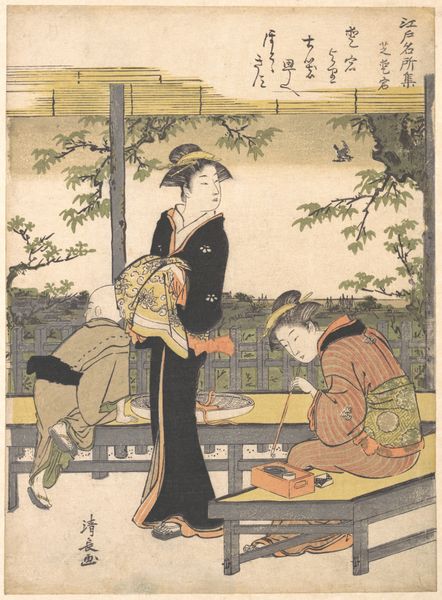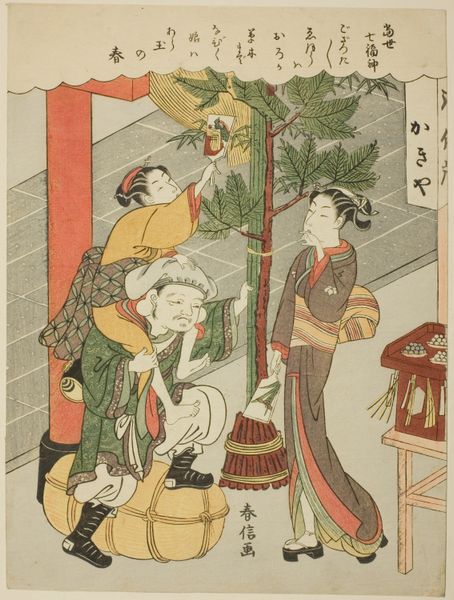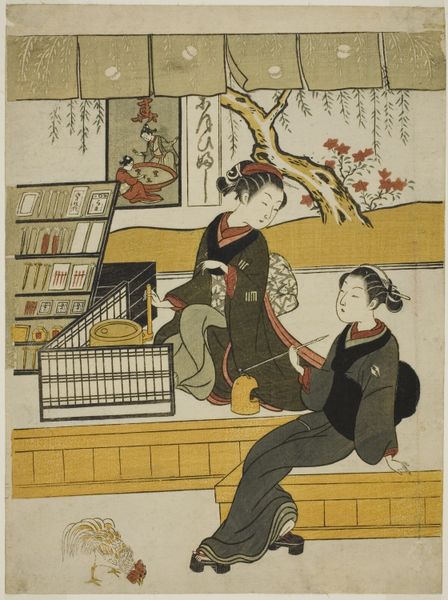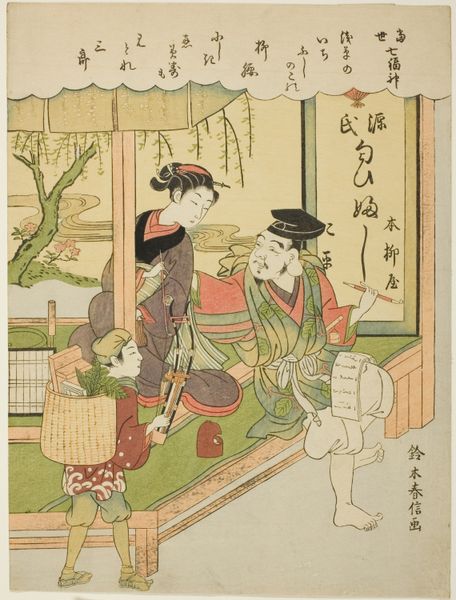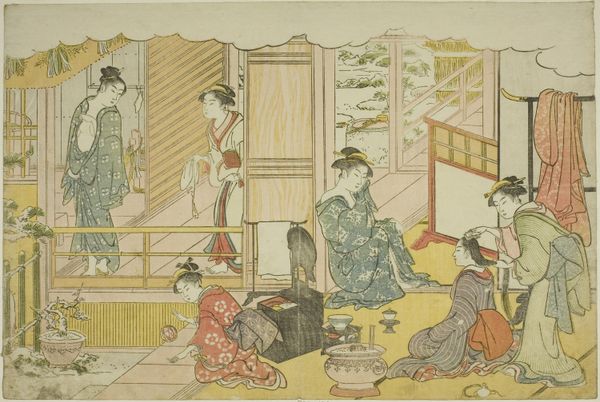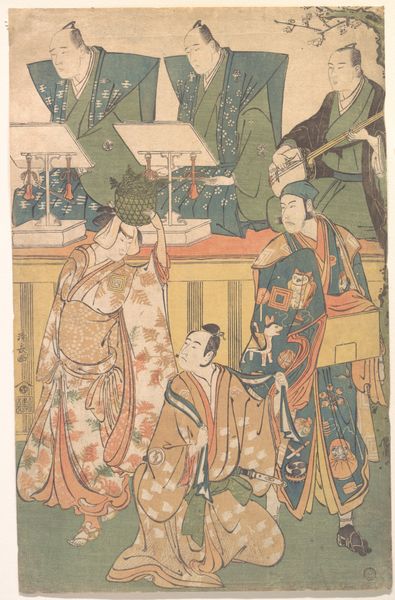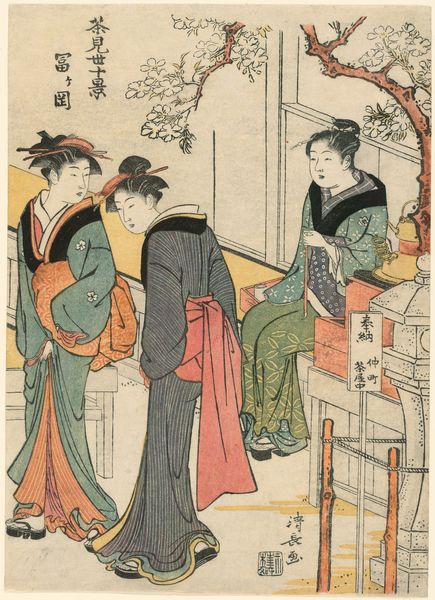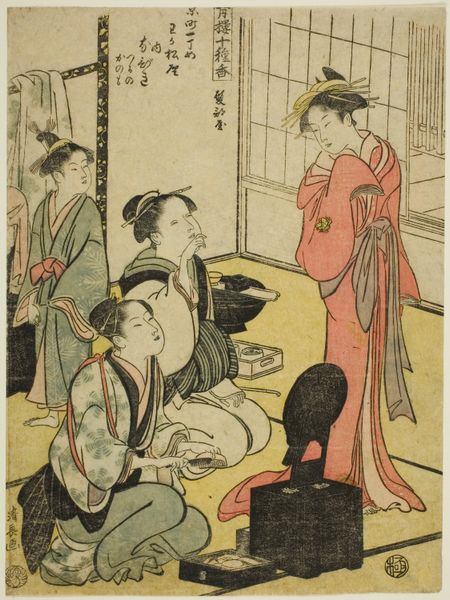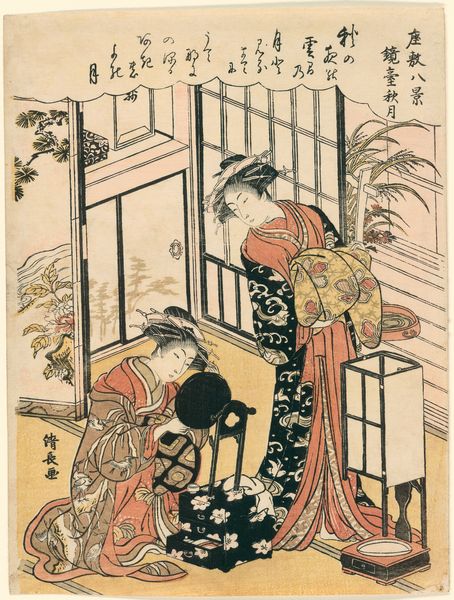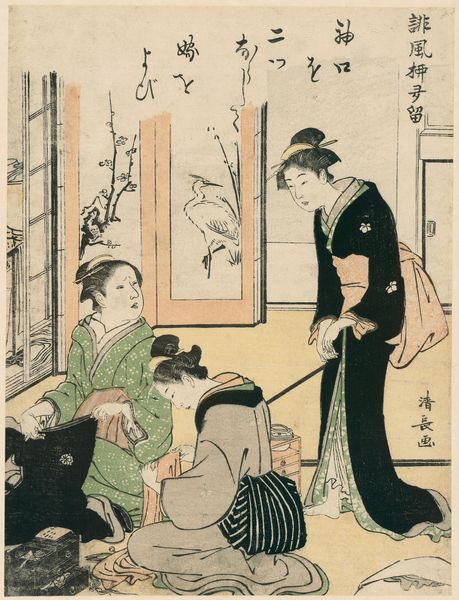
Takata, from the series "Ten Summer Scenes in Edo (Edo natsu jikkei)" c. 1787
0:00
0:00
print, woodblock-print
# print
#
asian-art
#
landscape
#
ukiyo-e
#
illustrative and welcoming imagery
#
woodblock-print
#
genre-painting
Dimensions: 25.8 × 19.1 cm
Copyright: Public Domain
Editor: This is Torii Kiyonaga's "Takata, from the series "Ten Summer Scenes in Edo," made around 1787, a woodblock print at the Art Institute of Chicago. I'm struck by the everyday quality of the scene, and by how the linear elements contrast with the patterned robes. What captures your attention when you look at this work? Curator: I'm drawn to the way the woodblock printing process itself informs the subject. Consider the labor involved, not only by Kiyonaga but also the artisans cutting the blocks and applying the pigments. This was commercial art intended for a burgeoning urban consumer class. How does its status as a commodity shape our understanding of Edo society? Editor: That's fascinating. I hadn't really considered the printmaking process beyond just the image itself. So the materials, the woodblocks, and the ink, they speak to more than just aesthetics? Curator: Absolutely. The materiality speaks volumes about the social context. Think about the availability of these prints: they were affordable, mass-produced images accessible to a wider audience than traditional painting. This also blurs the line between "high art" and commercial craft. How does the ease of reproduction democratize art or simply transform it into a disposable commodity? Editor: It definitely makes me rethink ukiyo-e beyond just pretty pictures. Is there something particularly significant about the way Kiyonaga depicts leisure and the daily lives of women? Curator: Certainly. The prints themselves were made through labor to show leisure, purchased to observe women's fashion of the moment; Kiyonaga's delicate and precise style, dependent upon skilled craftsmanship, provided an illusion of serene refinement. Editor: That’s given me so much to consider – that this image is only the surface of a complex production process. I see so much more now than I did at first glance. Curator: Indeed! Recognizing the interplay between artistic vision, production methods, and social consumption deepens our understanding of this seemingly simple scene.
Comments
No comments
Be the first to comment and join the conversation on the ultimate creative platform.

